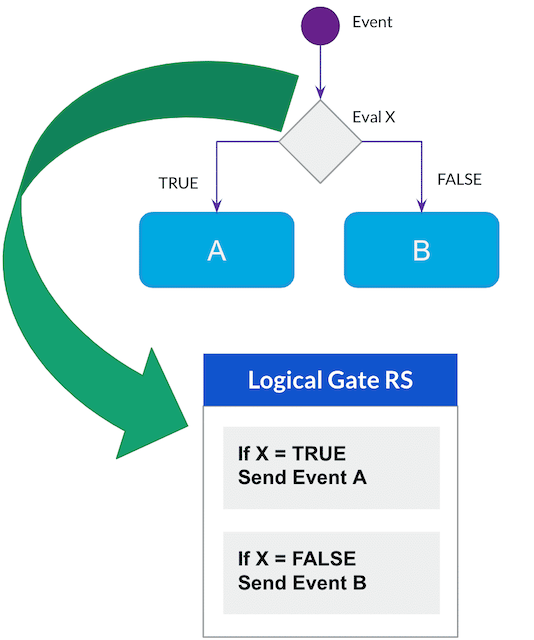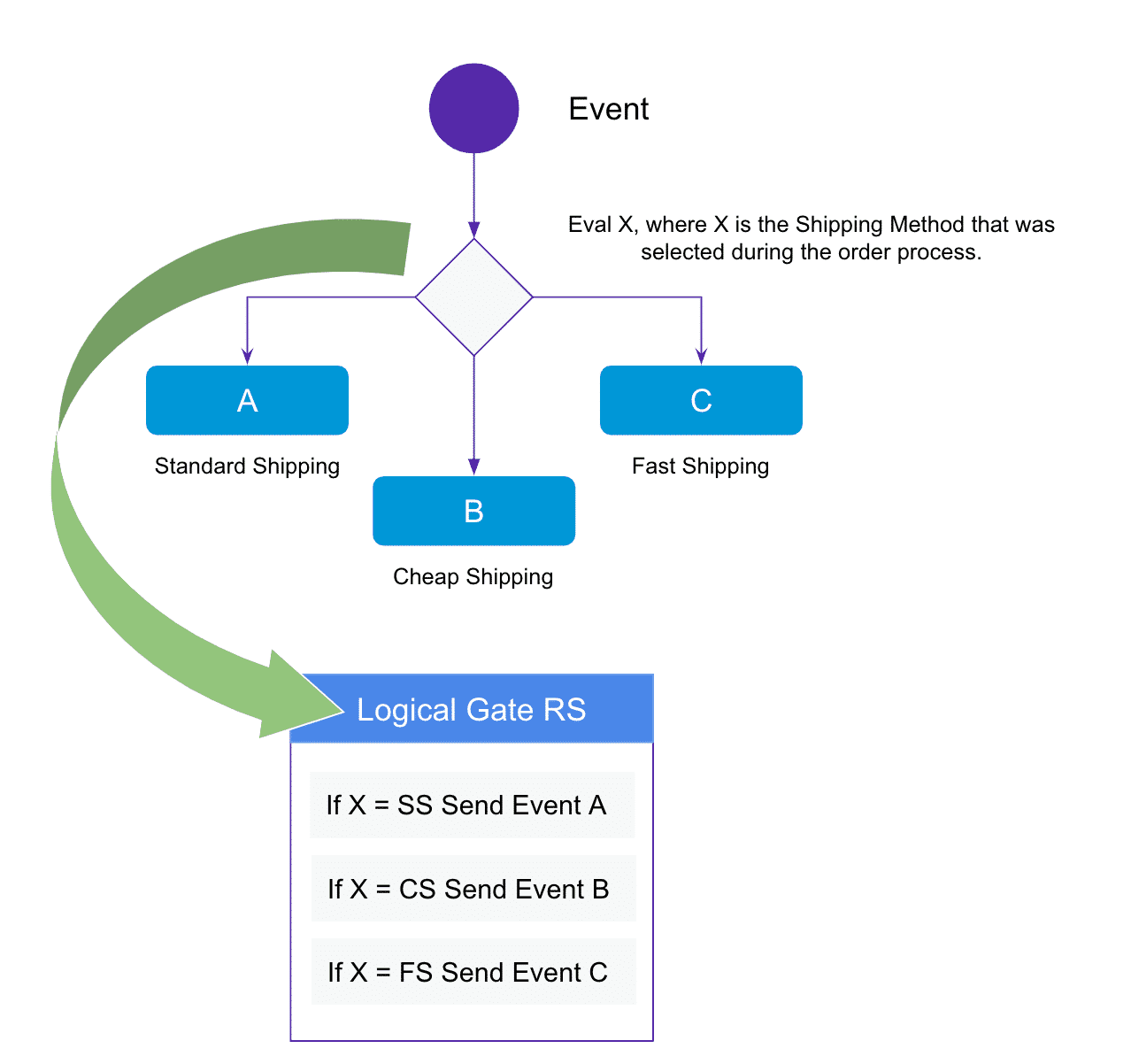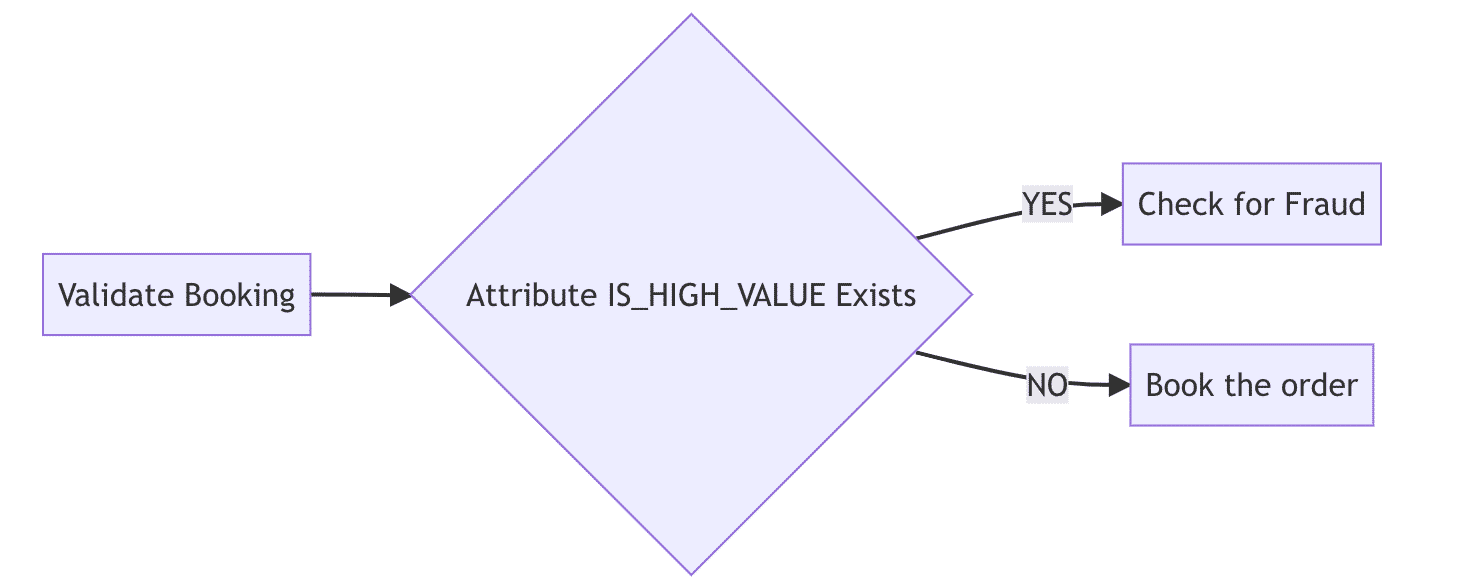Authors:
Dominik Malzacher, Esma Tuzovic, Cille Schliebitz, Anita Gu
Changed on:
2 Feb 2025
An introduction to the concept of Logical Gates and examples of how to use these in a workflow.
A Logical Gate is where the direction of the workflow execution depends on specific conditions being met, i.e., some logical condition that needs to be satisfied so that the workflow knows which branch to execute next.
Each Logical Gate involves a simple condition that evaluates to TRUE or FALSE. The diagram below represents this.
As seen in the diagram here:

A Logical Gate may also have multiple possible paths, such as evaluating an ENUM. Still, a Logical Gate's Ruleset only produces a single outcome, typically an inline event to process the next Ruleset. For example, evaluating X will help select one of the three branches (A, B, or C) to continue processing.
Example: The evaluation of the shipping method that was selected during the order process.

For this scenario, let's assume that the client has a simple requirement:
If the order is above $500, annotate it as High Value, check for Fraud, or book the order.
As you can see here, only one of those conditions can ever resolve to TRUE at any given time, thereby providing only a single output path from this Ruleset at any time.
